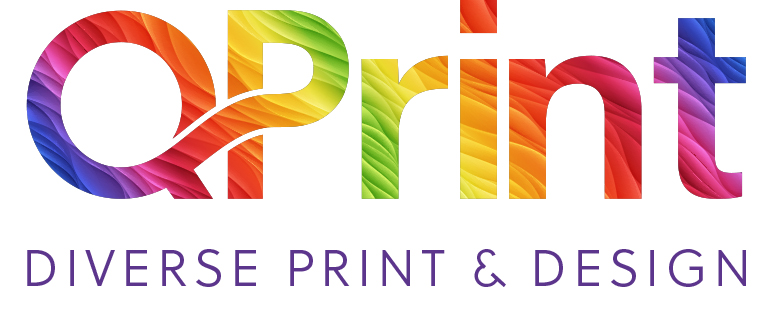Networking, trade shows and conferences are fantastic opportunities to increase brand awareness, gain leads and generate sales. The key to making the most of these events is to ensure everything about your brand on the day makes an impact. This includes all aspects of your design from your signage right down to the finishing touches used on your printing.
With so many print techniques and finishes to consider, it can feel overwhelming at times to choose the right options for your next marketing campaign. In our latest blog we would like to share a little more about the different print techniques we offer, to help make those decisions a little easier.
Paper Weights
There are many different paper weights available for your next marketing project. Paper weight is measured in GSM which stands for grams per square meter. Most of the time, the higher the gsm value, the heavier and thicker it will be. The weight of paper speaks volumes about your brand and it is one of the most crucial things to get right. A heavier paper weight will suggest quality, so with items like business cards this is important. Below we summarise the ideal paper weight for different items:
- 130gsm to 150gsm – heavier and more durable than the paper that is used for writing pads or desktop printers, this paper weight is best for budget flyers, leaflets and pages inside a company brochure.
- 170gsm to 200gsm – this paper is midway between card and paper, making it perfect for thicker leaflets creating a higher quality feel.
- 200gsm to 250gsm – this durable paper is the starting point for heavier card that has a more rigid feel. Typically, used for cover stock in brochures.
- 350gsm to 450gsm – this is generally the heaviest paper used in print. It is idea for sturdy business cards and postcards.
Spot UV
Spot UV is a method for coating printed products, the technique involves applying a thin layer of UV gloss which is bound with heat to areas of your design and then dried under a special UV light. The technique enhances shine, protects its colour and preserves the design. Spot UV varnish creates texture and depth to the print item making it tactile and memorable. Before this process is carried out the paper is matt or velvet laminated, the contrast in shine between the Spot UV and the laminated material is a fantastic way of creating eye-catching patterns. It can be used to draw attention to aspects of your design like your logo and contact information. Plus, due to its lack of volatility, it is also environmentally friendly.
Colour Difference
When it comes to printing it’s important to remember all viewing devices are different. This means colours will vary from computer screen, to mobile, to print. For this reason the print industry uses a Pantone colour reference system to ensure your brand colours are kept consistent and correct across all media types. Every colour shade has a Pantone reference and forms an essential part of the company’s brand guidelines.
Lamination
Lamination adds a protective layer that results in long-lasting print and with three finishes to choose from, gloss, matt and velvet, you can choose a finish that will compliment your desired result. Gloss enhances colours and keeps them vibrant; matt softens colours adding a touch of sophistication; and velvet has luxurious silky feel and deepens the colour.
As well as looking great this printing finish protects the ink and is recommended on large areas of ink coverage as well as protecting colours that run over a fold by reducing the natural ‘cracking’ of the paper. This is an effective way to WOW your audience and create an impact at your next event.
Foil Printing
Foil printing uses heat, pressure and metallic paper (foil) to create a design which demands the readers’ attention. The process involves the application of foil on to a solid surface by applying a heated ink. This permanently sticks the foil to the surface below which leaves the design of the ink, no matter how intricate it is. The technique comes with a wide selection of colours and finishes including holographic and pearlescent.
LED UV Printing
This print technique uses ultraviolet light for instant drying, leading to sharper designs and more vivid colours. The technique also ticks all the boxes when it comes to sustainability. Thanks to increased drying speed the technique uses less power than traditional print drying technology, plus the super-fast curing time means very little energy is required compared to conventional drying processes. The overall impact means a reduction in the carbon footprint.
In Summary
We hope you have gained some useful insight into the different kinds of print techniques which can benefit your next print project to help them stand out. If you would like some support in preparing for your next conference or event, get in touch to find out how Q Print can help.
